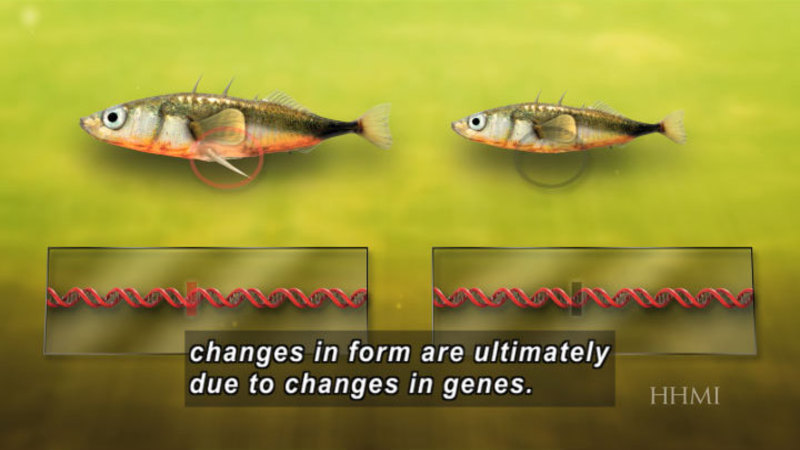The Making Of The Fittest: Evolving Switches, Evolving Bodies

After the end of the last ice age 10,000 years ago, populations of marine stickleback fish became stranded in freshwater lakes dotted throughout the Northern Hemisphere in places of natural beauty like Alaska and British Columbia. These little fish have adapted and thrive, living permanently in a freshwater environment drastically different than the ocean. Stickleback bodies have undergone a dramatic transformation, some populations completely losing long projecting body spines that defend them from large predators. Various scientists, including David Kingsley and Michael Bell, have studied living populations of threespine sticklebacks, identified key genes and genetic switches in the evolution of body transformation, and even documented the evolutionary change over thousands of years by studying a remarkable fossil record from the site of an ancient lake ten million years ago.
(Source: DCMP)
Metadata
- Subject:
- Animal Sciences - Science
Files 1
-
The Making Of The Fittest: Evolving Switches, Evolving Bodies

- Type:
- Video
- Format:
- Streaming
- Accommodations:
- English Audio Descriptions - Visual, English Captions - Auditory
- Languages:
- English
- License:
- OER
- Author:
- Howard Hughes Medical Institute
- Length:
- 15 minutes
